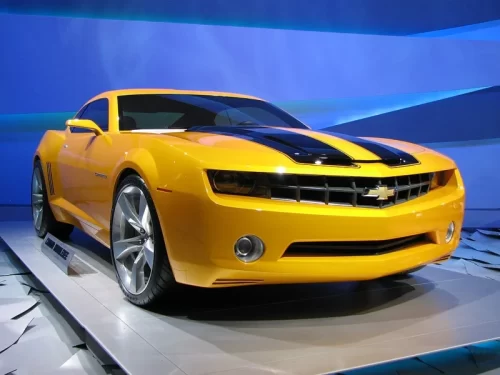
FAST FACTS Vol. 1, Issue 8 – TRANSFORMERS BumbleBee
BumbleBee from Transformers… Chevy Camaro Autobot Transforms! From the beat-up 1977 Chevrolet Camaro in the first Transformers, to the fully-customized 2016 model in The Last Knight, this

Part Two of a Three-Part Series
While this is part two of our Batmobile series, it features the first “wave” of Batmobiles, conceived by director Tim Burton for the original Batman movie (1989) and Batman Returns, (1992). The design was essentially carried through by director Joel Schumacher for Batman Forever, (1995) and Batman and Robin (1997).
The “Keaton Mobile” was the brooding musings of famed director Tim Burton, (Beetlejuice, Nightmare Before Christmas), and was designed by Anton Furst. Driven, of course by Michael Keaton. Taking a hard left-turn into the Art Deco styling of the mythical Gotham City, spurred a new view of Batman as powerful and undeniably cool. It brought swooping curves and coined the “Bat-Missile” moniker for a few of its stunts in the movies. It made its debut in the first Batman movie (1989) but returned in Batman Returns (1992). How fitting.
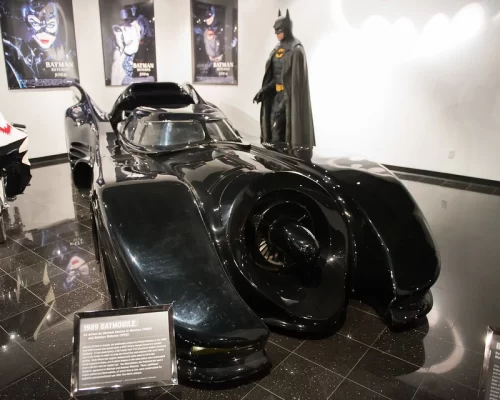
The production design featured a massive central turbine running down the center of the car, but it was all just for show. But that didn’t stop Batman enthusiast Casey Putsch, from creating a turbine-powered Batmobile replica, featuring a 400-horsepower Boeing turboshaft engine from a drone anti-submarine attack helicopter, mated to a four-speed semi-automatic transmission that sends power to the rear wheels. It works like the turbine-powered Indy cars and was noisy, a little scary, and definitely uneconomical, but it’s completely street-legal.
A recent auction in Russia lists the original Batmobile for an opening bid of $1.1 million.
The “Kilmer Mobile” was brought to life by director Joel Schumacher for Batman Forever. His lighter, cartoonish, and family-friendly Batmobile was well-received after the dark, edgy Batmobile in the previous two movies.
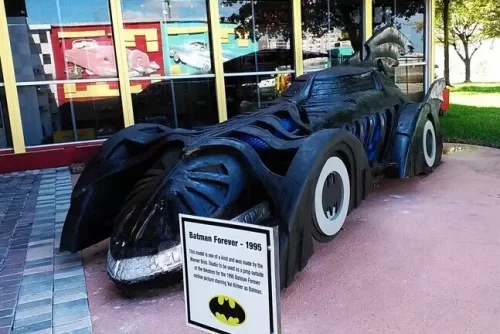
The Batman Returns Batmobile was fitted with large, stylized fins and neon lights everywhere. It featured a Chevy 350 cu. in. ZZ3 engine, with aluminum headers, angled plugs, and a sultry valve grind. The 25-foot-long body was made of a high-temperature epoxy fiberglass laminate. It also featured (way-cool) hyperboloid-gear pivoting tires.
The “Clooney Mobile” in Batman and Robin was applauded as the most bizarre rendition that it was so bad, it was that good. Seriously, it was a convertible. What were they thinking? But, the difference between the “children’s toy” look of the Kilmer Mobile, and this iteration is the Clooney Batmobile was subjected to rigorous road testing, reaching a top speed of 140 mph. At 33 feet long, the beast boasted a REAL top speed of 350 mph, thanks to a Chevy V8 ZZ3 with a jet engine afterburner. The vehicle also included an ejection seat, and various weapons, including axel bombs and rocket launchers.
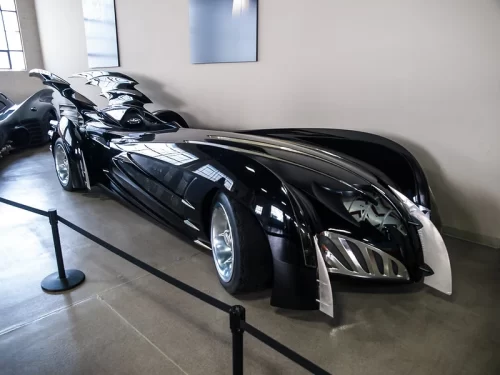
In closing, few know there was another Joel Schumacher Batman movie in the pipeline. “Batman Unchained”. Unfortunately was canned when the revenue from Batman and Robin fell woefully short of the already low expectations.
If you want to create a replica Batmobile of your own, bolt in a world-class FRASER remanufactured engine and speed through Gotham City!

BumbleBee from Transformers… Chevy Camaro Autobot Transforms! From the beat-up 1977 Chevrolet Camaro in the first Transformers, to the fully-customized 2016 model in The Last Knight, this
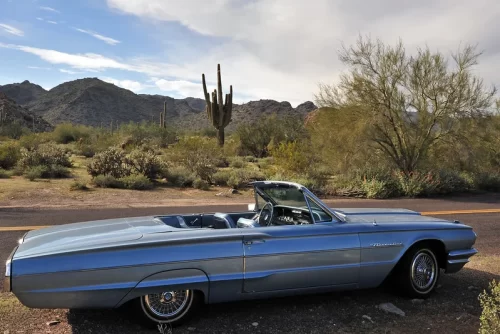
Starring two chicks and a 1966 Ford Thunderbird Convertible “It’s not about the journey, it’s about the destination…” (at least in this movie) Thelma &

Issue 1 • Engine & Transmission Tip Welcome to Fraser Engine Company’s Under The Hood – A new resource for engine and transmission tips. Our
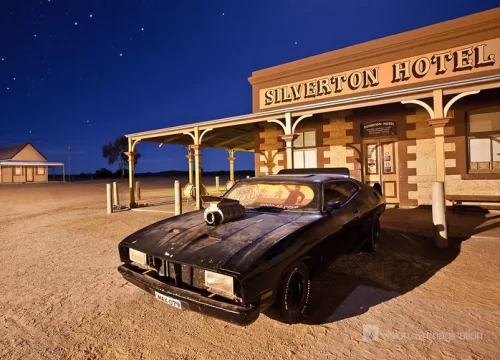
Known as the Pursuit Special, This Iconic Car Led Them All The 1973 Ford XB Falcon GT 351 was already a mean machine Introducing The

Hey there, classic car buffs and Ford enthusiasts! Fraser Engines here, and we’ve got a real treat for you today—a deep dive into the legendary

Where The Way-Back Seat Meets The Road! A Tribute To Station Wagons & Their Kid-Magnet Way Back Seat A Tribute To Those Great-American Station Wagons